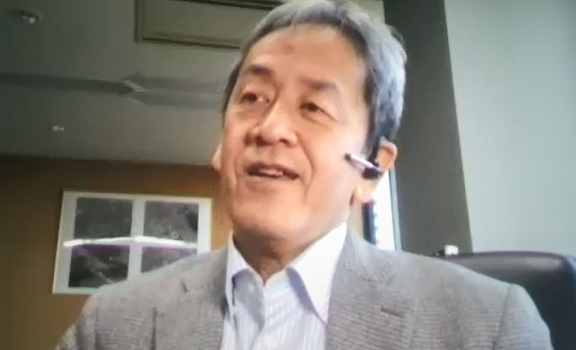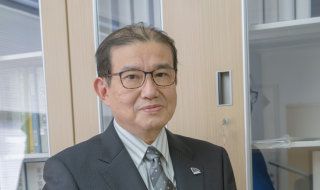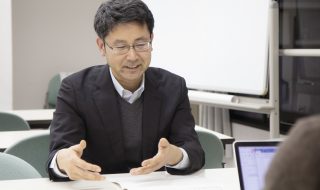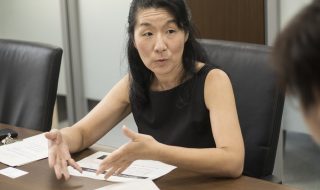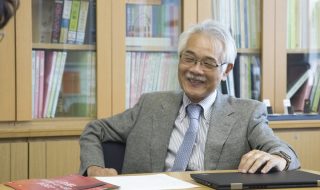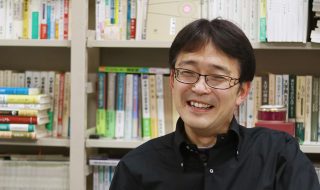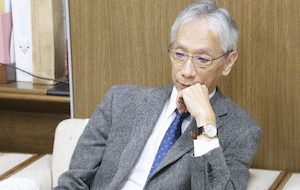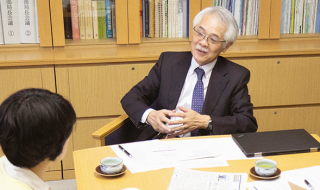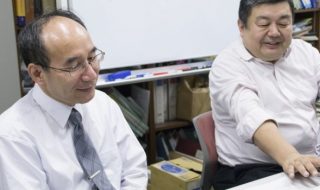This is an extended version of our interview with Dr. Ohshima originally published in “Kyoto University FD 2020.”
Challenges in the Faculty and Graduate School of Engineering: Enhancing students’ application skills and English proficiency
You have been serving as the Dean of the Faculty and Graduate School of Engineering, the largest faculty and school under Kyoto University. Could you elaborate on what you have done to address diverse educational needs, and what are the challenges faced by the Faculty and Graduate School of Engineering?
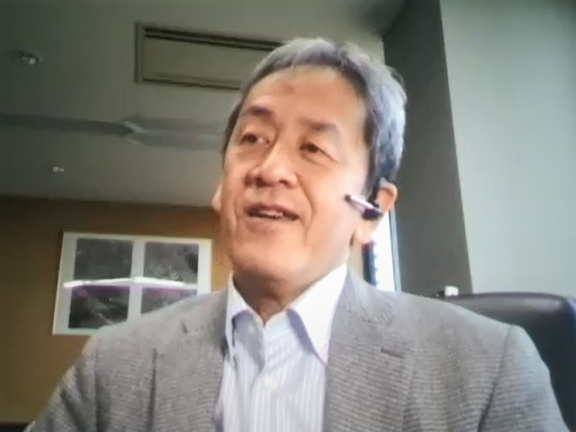
I’m not going to comment on individual classes here, as each of the departments and majors has its own unique policies and practices. Having said that, I think one of my responsibilities as the Dean of the Faculty and Graduate School of Engineering is to spot issues and challenges commonly faced by several departments and majors.
The first challenge that the Faculty and Graduate School of Engineering is facing is to enhance the flexibility and application skills of doctoral program graduates. Graduate education is often perceived as generating narrow-minded specialists since graduate schools place too much emphasis on research in specialized fields. Notoriously, doctoral program graduates are said to be lacking application skills because of their specialized background in limited fields. To address this issue, the Graduate School of Engineering launched a new educational program called “Interdisciplinary Engineering Course” more than ten years ago, which allows students to take classes across all majors within the school to satisfy the course requirements. For example, the “Engineering for Life Science and Medicine Course” and the “Integrated Medical Engineering Course” foster students who excel in the interdisciplinary field of medical engineering; the “Interdisciplinary Photonics and Electronics Science Course” develops the next-generation of leaders; and the “Human Security Engineering Course” train students to be capable of designing cities and urban policies to eliminate the fears associated with poor hygiene, natural disasters, and poverty, from our lives. All of these courses are systematically designed for students to study across disciplines and majors under the graduate program. Now that it has been more than ten years since the program was launched, I think it’s time for a review of the program.
Our second problem is related to STEAM education and academic pressure on students. Since the school’s relocation to Katsura Campus, engineering students have lost the impromptu opportunity or motivation to drop by the classes and lectures of other fields, such as economics and literature. I feel that we need to do something about this, especially considering the diversity of students. What I think might be effective is to take full advantage of the Katsura Library. Notably, the library has a reading room that overlooks the beautiful landscape of Kyoto. Since the opening of the library, it has served as a quick getaway for students from the hustle and bustle of their research, also as a quiet space for meditation and contemplation. It is namely a space to quest for a “relaxed and peaceful mind.” The library gives students access to see and check books of different genres, some of which might not be related to their fields. Yet, I believe the serendipitous browsing of library stacks and finding books out of their scope of research may eventually broaden their academic horizon. The library contributes greatly to releasing students’ pressure and relaxing their busy minds. I also hope to maximize the use of the library as a base for industry-academia collaboration and as a source to send information and announcements.
The third problem is related to the previous one. English proficiency of engineering students hasn’t improved much. Their TOEFL score results indicate that “students of the Faculty of Engineering haven’t made much progress in their English proficiency since they entered the university.” By the same token, the graduate school administers the TOEFL test to first-year master’s students for two years in a row, and compare their test scores with those from their undergraduate years. Sadly, no data has shown a remarkable improvement in their English proficiency. As much as we want to help them improve their English skills, they may be too busy and do not have enough time to study English.
The fourth point is that undergraduate engineering students are often caught in the hierarchical structure and density of the school’s curriculum, so that it is difficult for them to find opportunities to study abroad for a long term. Data from Kyoto University also highlights that the number of engineering students who study abroad for a medium-to-long term is significantly lower than in other faculties. When it comes to overseas experience, the Faculty of Engineering believes that students should go abroad to present their research at international conferences only after being assigned to a laboratory in their fourth year or above. Building upon this notion, the Graduate School of Engineering awards 17 outstanding doctoral students with a one-month study abroad experience at overseas laboratories of their supervisor’s friends, and their travel and miscellaneous expenses are covered by donations. On the other hand, at the Faculty of Engineering, there is no systematic study-abroad support available for undergraduate students. The idea that students should be given medium-to-long study abroad experience in graduate school makes sense, still I see it as a problem that the faculty does not have any mechanism that allows undergraduate students to study abroad at all.
Lastly, the size of the Faculty and Graduate School of Engineering is way too large. Being large has its own good sides, but bad sides as well. I feel that the influence of inertia (the power of tradition) is too heavy that the school system lacks in mobility, despite its massive presence. For example, the traditional major system and its academic principles are highly valued, which in turn inhibits new movements to establish academic organizations. Historically, the Graduate School of Engineering has been slow in reorganizing or reforming its educational system. It takes a considerable time before we start to see changes there. When I took office as the Dean of the Graduate School of Engineering, I called for immediate action to reorganize and discuss the future direction of the Interdisciplinary Engineering Course, which is joined by five departments of the Graduate School of Engineering. So far, however, little progress has been made. I acknowledge that the Interdisciplinary Engineering Course successfully prepared a foundation and system for the graduate school to apply for the MEXT’s Program for Leading Graduate Schools as well as the Doctoral Program for World-leading Innovative & Smart Education (WISE Program). At the same time, though, the financial support period of these programs is limited. Once the support is over, we have to manage the programs by ourselves. Given the conditions, I feel a pressing need to set up a system that will allow these programs to be maintained and continued through the efforts of the graduate school. I have been contemplating this issue for a long time now. What we should do right now is probably start thinking about creating a new curriculum by reviewing the existing Interdisciplinary Engineering Course and applying our experience in running the current platforms of the Program for Leading Graduate Schools and the WISE Program. On top of that, we should establish a cross-disciplinary organization, which I call a “strategic major” that integrates the latest research and education and the most appropriate personnel structure. We should also aim for continuity in our educational systems, flexibility and stability in our financial base, and a well-balanced personnel structure.
None of these issues mentioned above surfaced all of a sudden. Rather, these are the issues that the past Deans of the Faculty and Graduate School of Engineering have long confronted and worked toward solutions. Despite our long efforts, however, we have not been able to reach a perfect solution.
None of these issues mentioned above surfaced all of a sudden. Rather, these are the issues that the past Deans of the Faculty and Graduate School of Engineering have long confronted and worked toward solutions. Despite our long efforts, however, we have not been able to reach a perfect solution.
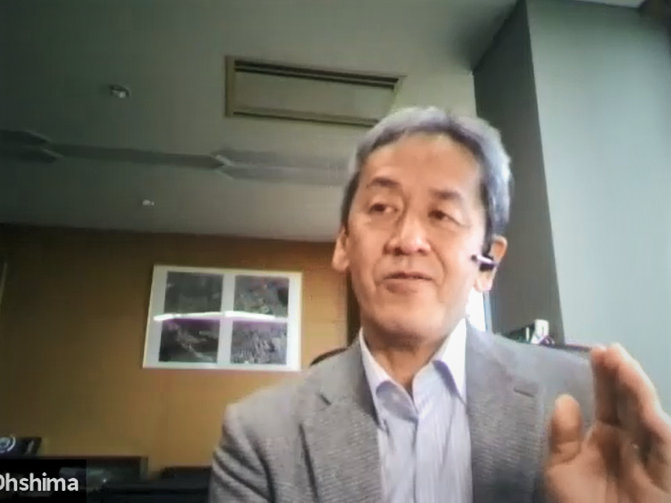
As one of our strategies to improve students’ English skills, we have been running a program called QUEST. English instructors from private language schools come to the university in the evenings to teach English classes for a fee. The program is still in session, but honestly, not many students participate in the program. In addition, driven by the need for practical English skills, the Engineering Education Research Center takes the lead in providing English classes. We have hired some faculties who specialize in language education, not in engineering, and they have been designing and offering English classes for us. Even so, the number of students who have taken these classes and improved their English skills is relatively small among all engineering students.
As for study abroad issues, as mentioned earlier, graduate students have plenty of opportunities to present their research at conferences overseas. In the case of doctoral course students, all of them present at overseas conferences at least two or three times during their course. In addition to these short-term overseas experiences, we are hoping to create a program that allows students to study abroad for longer periods of time than just a week or so. It seems that graduate students go abroad for research-related purposes, while undergraduate students tend to focus on language study. Nevertheless, I think that’s all fine.
Let me share some positive news about the measures to facilitate our students’ experiences abroad. A non-profit organization temporarily named “Friends of Kyoto University” was established in the US with the guidance of Executive Vice-President Dr. Sachiko Kuno. They are moving forward with a plan to build a framework where donations collected in the US will be invested and the profits will be returned to Kyoto University by way of donations. In the US where donation is practiced as a culture, a donor who is keen to support education and research initiatives in the field of engineering has decided to donate a large amount of money for the organization. With the profits from his/her investment, I think we will be able to offer some financial support for our students to participate in short-, medium-, and long-term programs in the US. For undergraduates and master course students, we are planning to cover the expenses necessary for their overseas research and trainings, as well as language study for a few weeks period. For doctoral course students and early-career faculties, we are preparing to set up a support system to cover their travels and accommodations for one to two years long. All in all, I fully encourage students to immerse themselves in an English-speaking environment and struggle with language barrier and cultural differences. When I was staying abroad, I had a very hard time communicating with others. I even wet my pillow with tears. After all, without such struggles, we won’t dare to drive ourselves forward to reach our best potential, right?
Have the COVID-19 pandemic and all the complications it brought impacted the faculty members at the Faculty of Engineering and their teaching? What are your future prospects for the education and classes of the faculty?
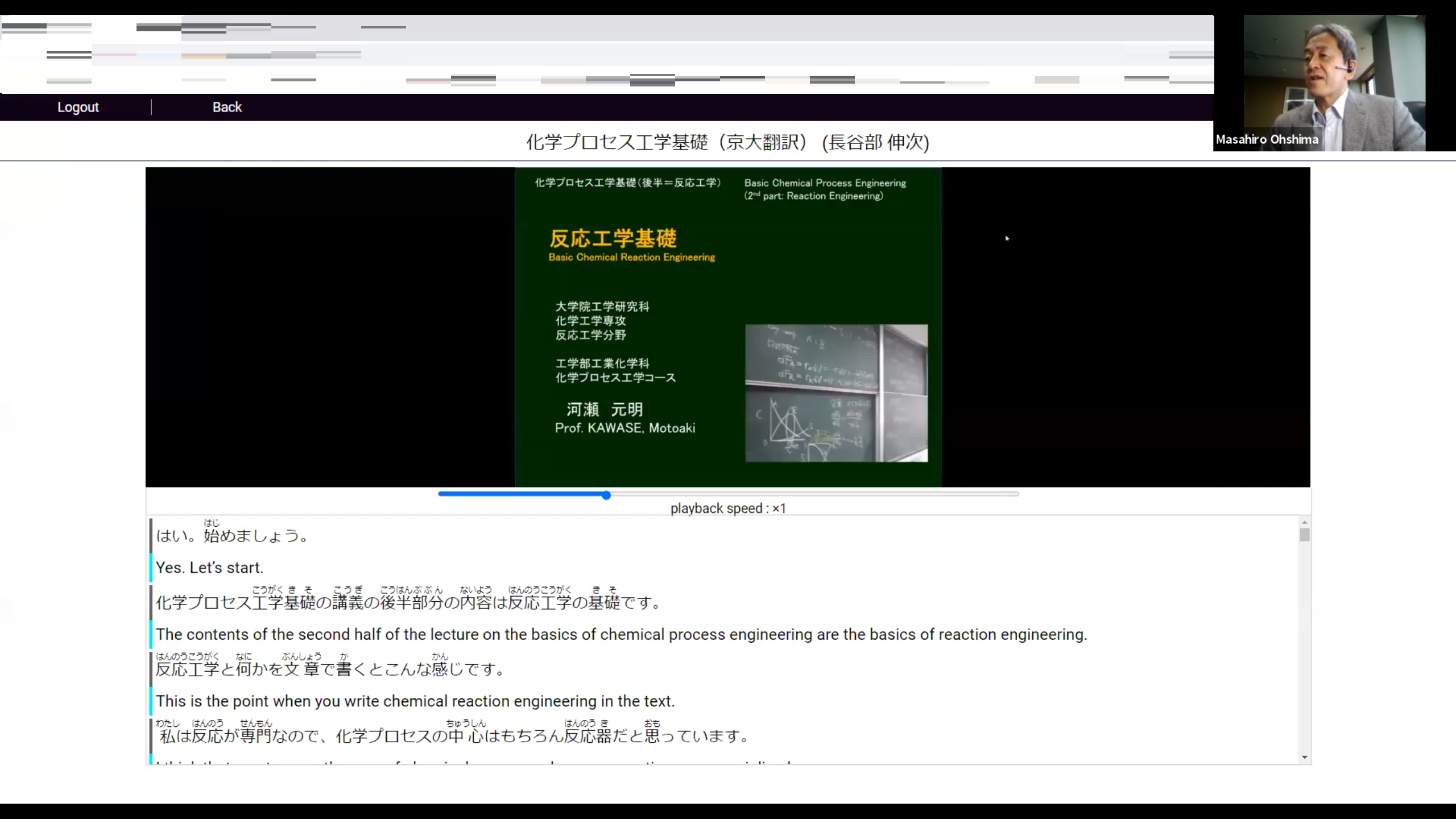
Have the COVID-19 pandemic and all the complications it brought impacted the faculty members at the Faculty of Engineering and their teaching? What are your future prospects for the education and classes of the faculty?
Starting from here, I hope that our current online teaching practices via Zoom would accelerate the integration of ICT into the classroom. In that perspective, I highly support the Faculty of Engineering’s unique challenges to integrate ICT into the classroom: introducing the speech-to-text translation teaching support system (automatic speech recognition and Japanese-English simultaneous translation) compatible with Zoom classes; using VR and AR as a means to explain how to construct experiments; and shooting introductory videos to show experimental procedures. The speech-to-text translation teaching support system has been developed not so much as a learning aid during the COVID-19 crisis, but more broadly to help international students’ understanding of classes, and to boost Japanese students’ English competency. Among all international students studying at Kyoto University, we are particularly concerned about Kyoto iUP students who enter the program without a knowledge of the Japanese language. The success of the Kyoto iUP program relies largely upon their professional undergraduate education and their growth as well-qualified individuals who are ready to enter graduate school or the job market after the completion of the program. Kyoto iUP students take intensive Japanese language lessons provided by the Institute of Liberal Arts and Sciences, but that’s not enough. Eventually, they are expected to master a satisfactory level of Japanese to be able to fully understand professional lectures offered in Japanese. Meanwhile, it is not a realistic idea to forcibly ask faculties who teach professional lectures to change the language used in their classes into English. Some professors claim that they can do better by speaking in the Kansai dialect, and some are opposed to the idea of teaching in English for the sake of international students at the expense of Japanese students’ understanding. They made their points clear and they are absolutely right in saying so. To flatten the gap between the two sides, we have constructed the aforementioned speech-to-text translation teaching support system not only for international students, but also for Japanese students to be exposed to English learning environments. If the translation system is incorporated into OCW and MOOCs, the time and effort spent for translation will be eliminated to a great extent, and the use of these online platforms will surely prevail.
Faculty members have access to the speech-to-text translation teaching support system, and recordings from each of their classes are made available as a data library. A major stumbling block of this system, however, is that it sometimes recognizes wrong words due to individual speech patterns and accents, and terminologies used in class. To clear this hurdle, we have been constructing a database of each professor of each subject, which has been taking a longer time than expected. The system recognizes voice in less than a second, then Japanese transcripts and English translation pop up simultaneously. For Japanese kanjis, the system adds kana reading to show how they are pronounced. Professor Kawahara, a leading expert in speech recognition, is in charge of designing the speech recognition function of the system. We are proud to tell you that our speech-to-text translation teaching support system has a 92 to 93% accuracy rate, whereas a device produced by a certain company scored only 80% in accuracy. In terms of translation, Professor Kurohashi, also known as a leading translation professional, has been working hard to create a translation system that does not translate on a word-by-word basis but identifies chunks of Japanese words and phrases and translates them at once by inference. In essence, this is the most advanced technology in the world. To maximize this effort, I have been soliciting each department to join us by increasing the number of courses that can take advantage of this system. Hopefully, this effort prevails for a university-wide use in the future.
School nurse office with a welcoming atmosphere
School nurse office with a welcoming atmosphere
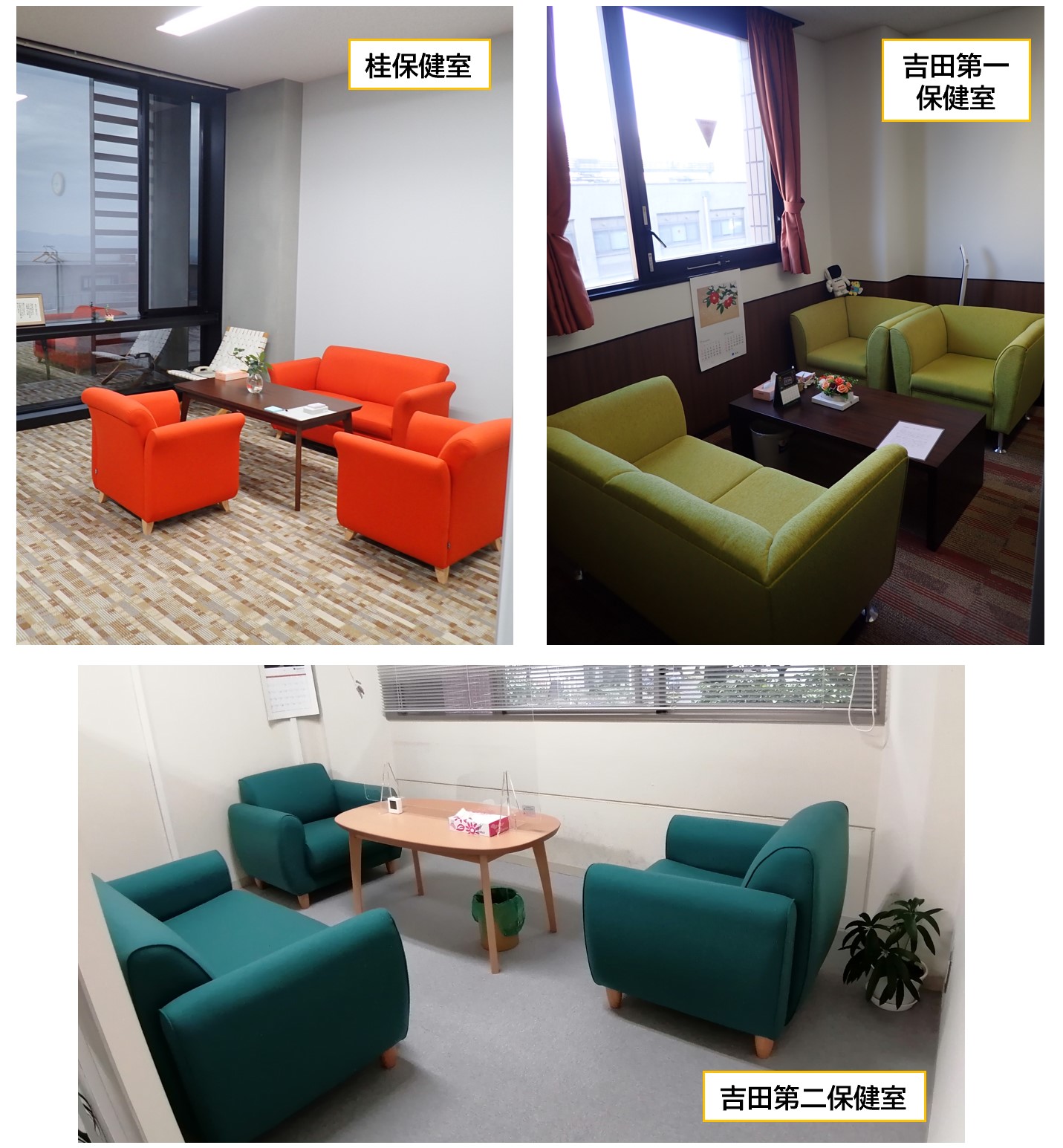
What we can see here is that students from the second year and above do not find online classes inconvenient so much, whereas first-year students are prone to feel anxiety and depression. What makes them feel this way? Partly because first-year students are not used to a new environment in university, and they may feel a discrepancy between the university life they have longed for and the reality they are facing now. Looking back on my student life, what I remember vividly is these trivial episodes and chitchats that my professors shared during class time, and I think it was these experiences that gave me a chance to interact with my professors. If classes are where students meet professors who may impact their academic lives, it’s our responsibility to offer opportunities for students to network with faculty members directly. Organizing more face-to-face orientations is one idea. Students are looking to meet new friends and faculties and get to know each other better. We can help them by offering more of such occasions.
One of the most serious problems faced by the Faculty of Engineering is the physical distance between faculty members and undergraduate students: faculty members are based in Katsura Campus, and undergraduate students are in Yoshida Campus. In order to shorten their phycological distance, I have asked all engineering departments to hold a small-group orientation and give students a chance to meet with friends and professors. At the beginning of the fall semester, faculty members invite students to attend at least one face-to-face orientation at their convenient place. Classes have been taking place online. The Faculty of Engineering has incorporated other services, including mentoring and school nurse offices, to offer the care and counselling that students may need.
There are two school nurse offices in Yoshida Campus, and one in Katsura. The first one opened in Yoshida Campus was managed very well by a school nurse, so I immediately thought that this service should be extended further. Thereafter, the second one opened in Katsura Campus, and another one in Yoshida Campus. Each of the school nurse offices has school nurses who are Kyoto University staff, so students can choose the office or the nurses to whom they feel most comfortable talking to. The rooms are named the “school nurse office” as it creates an open and welcoming impression and lowers the threshold for students to casually drop by. Something like the school nurse’s office that high schoolers walk in for a little chat. The offices accept walk-ins, as making an appointment in advance may keep students away. School nurses work closely with a faculty member who is a member of the Student Life Committee of the headquarters, also familiar with the services and functions of the counselling room and the school nurse offices. They compile biannual data together, with the number of visitors and their purpose of visit, to update each other and discuss potential problems. Faculty members make an announcement the school nurse offices’ services in orientation and in class to their students, and constantly liaise with the offices. In every orientation, we advise students to visit a school nurse office whenever they are in trouble.
In the case where a student has tested positive for COVID-19, or a student has been identified as a close contact to a COVID-19 positive individual, the school nurses actively communicate with the students by e-mail and frequently ask about their conditions and updates, rather than passively waiting to hear from them.
Lastly, how do you evaluate the FD of Kyoto University and that of the Faculty and Graduate School of Engineering during the past year?
Throughout my three years of serving as the Dean of the Graduate School of Engineering, I had a chance to share my vision for the university’s future. For about 15 minutes at every annual FD meeting, I talked about the future direction of undergraduate education, and the implications of Kyoto iUP. I saw a positive change in faculty members last year: they worked collaboratively to share information and exchange ideas on Zoom classes and online exams. I am so impressed by the efforts demonstrated by each one of them. Their one-year of tireless efforts and dedication must be equal to Kyoto University’s ten years of FD. Another point of note is the Zoom workshops held during lunch hours. The workshops were a good faculty development model and were really highly appreciated by many, as professors across different faculties and schools could learn from each other about their pedagogies. I hope this tradition goes on in the coming years. In my understanding, FD is not something that happens once a year, but rather it arises from our continuous and collaborative effort.
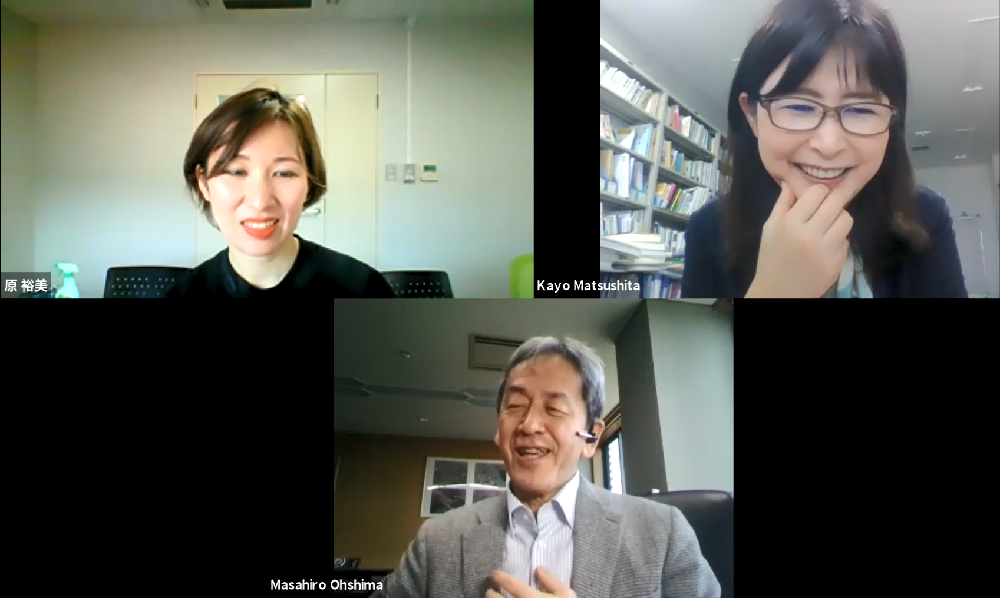
(Interview and transcript by Drs. Kayo Matsushita and Hiromi Hara)
List of Interviews


